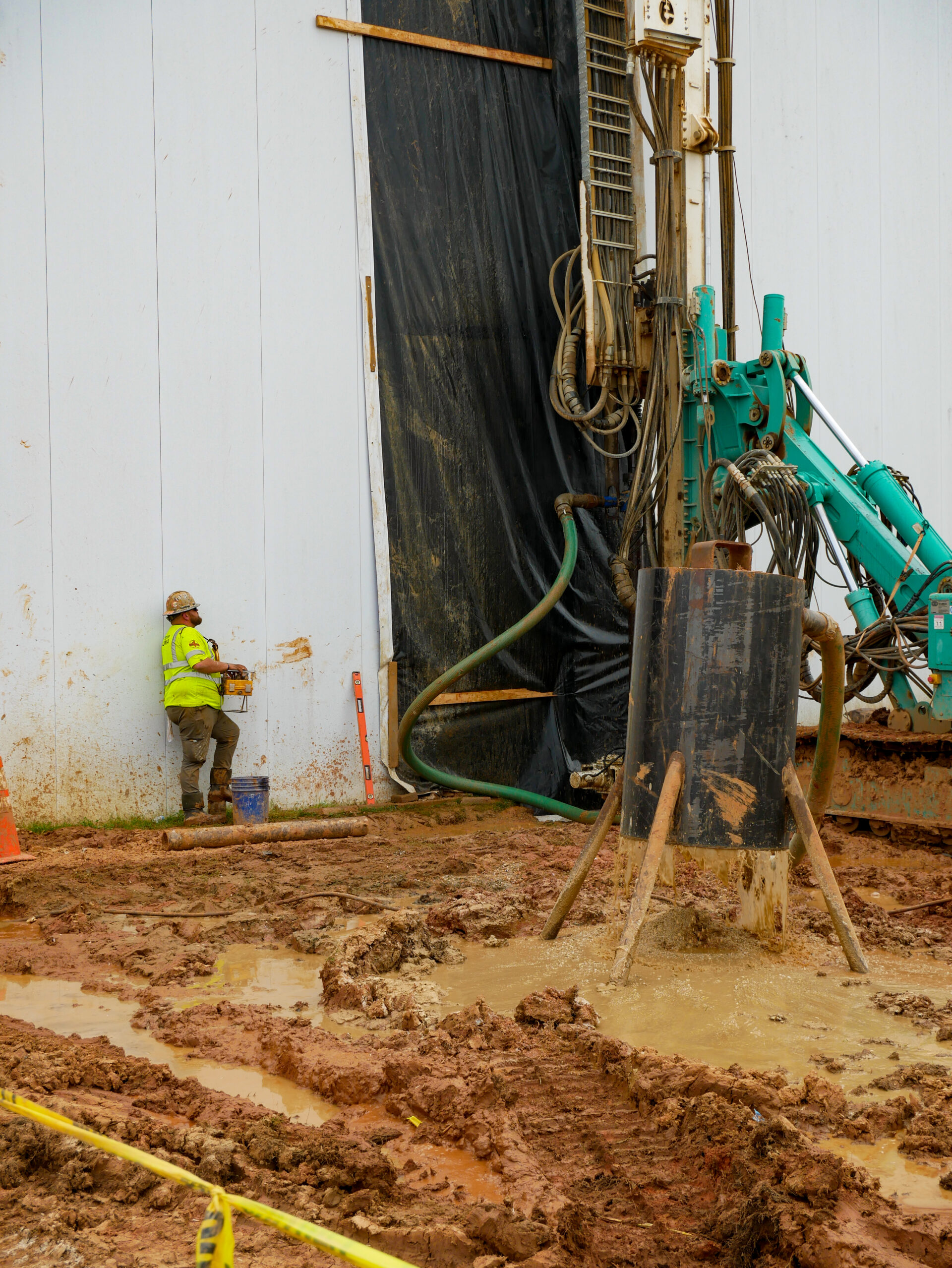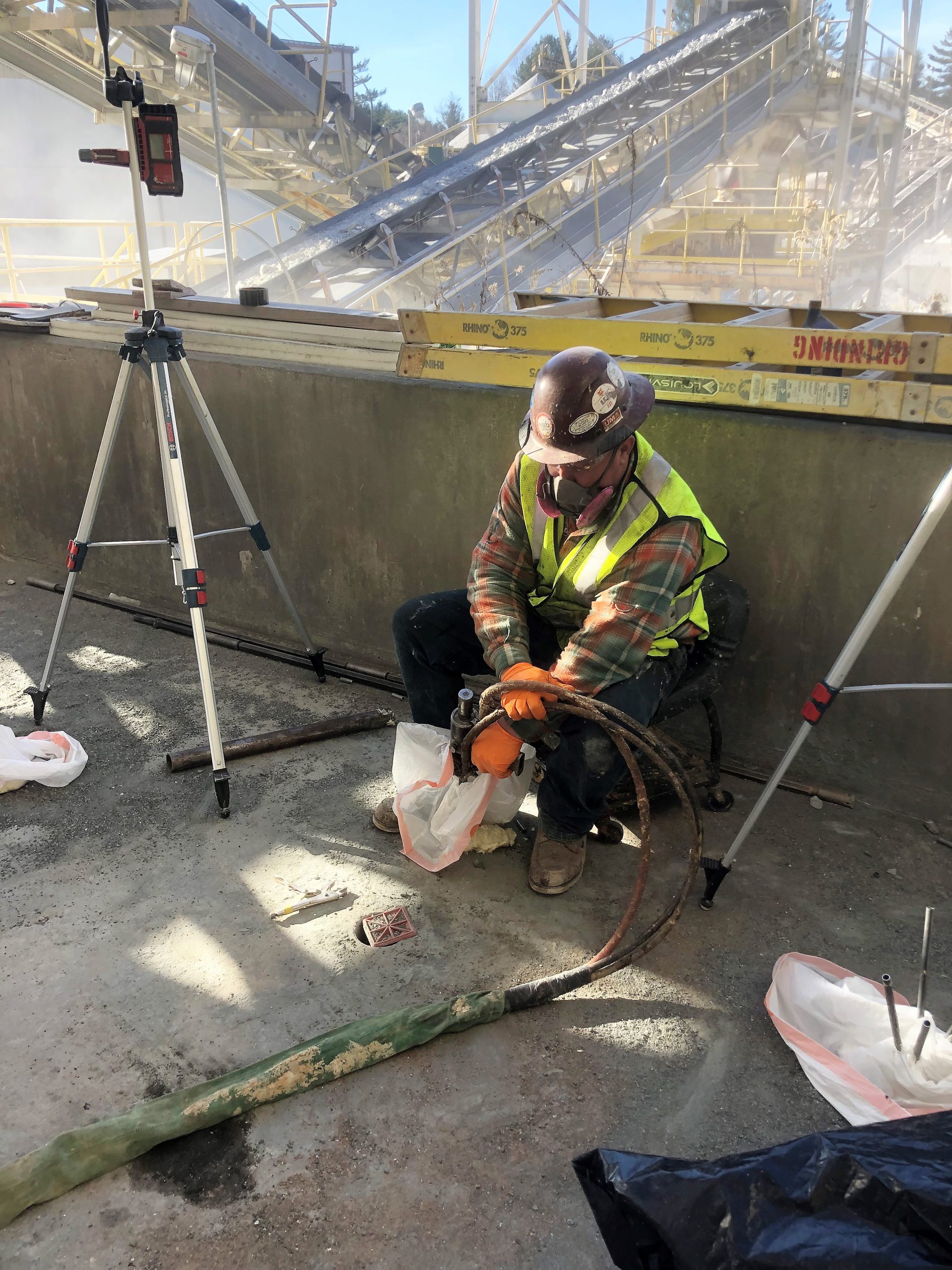UMA Deep Injections Correct Settlement at Tunnel Project
Chesapeake, Virginia
UMA performed work along a section of the new Chesapeake Bay Bridge-Tunnel launching and receiving shafts, being constructed in Chesapeake, Virginia. Our first mobilization was in 2019, and worked continued into 2020 for DRAGADOS USA. UMA was initially contacted in 2019 because the contractor noticed settlement under the existing electrical duct bank adjacent to where it was driving H-piles, for one of the new tunnel boring machine (TBM) shafts being constructed.
In order to mitigate future settlement, we performed UMA Deep Injections (UDIs) along the duct bank at approximate depths of up to 10 feet below grade in an existing sand layer. UDIs were placed at an angle to avoid existing communication cables in the decompressed area under the duct bank to modify the soil in-situ. It was a requirement that all communication cables between the duct bank and the H-Piles be located prior to our work in an effort to avoid any damages. Minimal field modifications had to be made to our injection pattern to avoid H-Piles, due to extensive surveying that was completed by Dragados, prior to UMA’s arrival.
DRAGADOS contacted UMA again in 2020 during sheet pile installation because it was aware that this area had a history of settlement issues. UMA performed UDIs at depths up to 9 feet below the existing duct bank along each side to modify the soil in-situ. The purpose of these injections was to consolidate and improve loose materials and create a High-Density Polyurethane Resin (HDPR)/soil matrix within the injection area. The end goal was to resist vibration and settlement during sheet pile driving. During this time, part of the duct bank was exposed while other areas were buried. In the unexposed areas, UMA had to determine the location of the top of the duct banks and base injection depths on that elevation knowing the dimensions of the duct bank.
Between both mobilizations, UMA installed a total of 22,000 pounds of HDPR material. DRAGADOS was able to resume work as a result to keep this critical infrastructure project moving forward.






